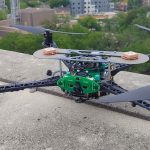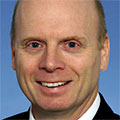
Return to Inside GNSS Web Seminars home page
This web seminar is complete. If you registered but were not able to participate in the live presentation on February 28, 2012, or if you saw the live broadcast but would like to review the speakers’ remarks, you may view a recorded version of the webinar again on-line.
(You didn’t register for this seminar but you’d like to hear what the speakers said? Sign up now for free at the link below.)
Return to Inside GNSS Web Seminars home page
This web seminar is complete. If you registered but were not able to participate in the live presentation on February 28, 2012, or if you saw the live broadcast but would like to review the speakers’ remarks, you may view a recorded version of the webinar again on-line.
(You didn’t register for this seminar but you’d like to hear what the speakers said? Sign up now for free at the link below.)
The recorded version of the webinar is no longer available for viewing.
You may download the list of additional resources (below) at any time:
» Webinar PDF Archive (Registration required)
ABOUT THE WEBINAR
GNSS and inertial technologies, once competitors, now appear frequently within the same integrated system design: in commercial and military aircraft landing systems; ship navigation; car and truck stability, guidance and control; anywhere that uninterrupted continuous positioning technology is required.
Integration presents a number of unique challenges, which were discussed in a February 28 live webcast sponsored by Inside GNSS and NovAtel.
During the technical presentation, the 400 system integrators, manufacturers and other GNSS professionals listening in were polled on the topic, with these results:
>>What do you see as the largest challenge with integrating inertial data with other sensors/systems?
Defining models for the inertial sensor errors, 48%; availability (or unavailability) of other sensors/systems, 25%; handling inertial error failures, 15%; and other, 12%.
>>What are the top two aspects of GNSS/INS that limits the use of it in your applications?
Cost, 63%; complexity of use, 39%; size/weight,32%; position accuracy, 31%; attitude accuracy, 27%.
In a post-event survey of webinar viewers, 85 percent indicated “above” or “exceeded expectations” and nearly all – 97 percent – said that the presentation either met, was above, or exceeded their expectations.
The Presenters
 Andrey Soloviev is a member of the University of Florida research faculty, Inside GNSS author and president of Qunav, an R&D business enterprise. He specializes in all aspects of multi-sensor integration for navigation applications.
Andrey Soloviev is a member of the University of Florida research faculty, Inside GNSS author and president of Qunav, an R&D business enterprise. He specializes in all aspects of multi-sensor integration for navigation applications.
 Demoz Gebre-Egziabher is an associate professor of aerospace engineering and mechanics at the University of Minnesota. His research area is in navigation, guidance and control of aerospace vehicles, particularly the design of integrated multi-sensor navigation and guidance systems.
Demoz Gebre-Egziabher is an associate professor of aerospace engineering and mechanics at the University of Minnesota. His research area is in navigation, guidance and control of aerospace vehicles, particularly the design of integrated multi-sensor navigation and guidance systems.
 Moderator Mark Petovello is an associate professor of geomatics engineering at the University of Calgary and GNSS Solutions editor. He is co-developer of GPS/INS and GPS/GLONASS software packages.
Moderator Mark Petovello is an associate professor of geomatics engineering at the University of Calgary and GNSS Solutions editor. He is co-developer of GPS/INS and GPS/GLONASS software packages.





